Hooker Glacier, aerial photosHooker Glacier lies on the east side of the Main Divide, and flows for approximately 10 km in a southward direction. Its area is 15 km2, and has an estimated mean depth of 66 m. The majority of the glacierís accumulation derives from the much higher Aoraki/Mount Cook (3754 m), which lies east of, and is substantially higher than, the Main Divide. Like Tasman Glacier it has a low-gradient, debris-mantled tongue that terminates in a proglacial lake; however the growth of this lake is much slower, and iceberg calving is insubstantial.
The photos are grouped according to: (i) mostly aerial views, focusing on the higher level accumulation areas (this page), followed by the debris-mantled tongue, and (ii) the features seen on the tramping route from Aoraki/Mount Cook village to the Hooker Glacier Lake (second page). |
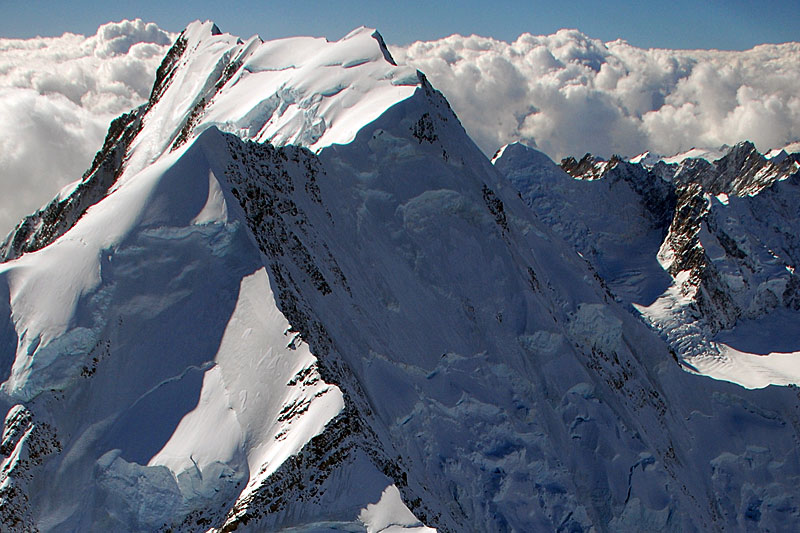 Aerial view of the three summits of Aoraki/Mount Cook. The highest peak (3754 m) is in the background, whilst in the foreground is Low Peak (3593 m). This photo is an enlarged section of the next one. | 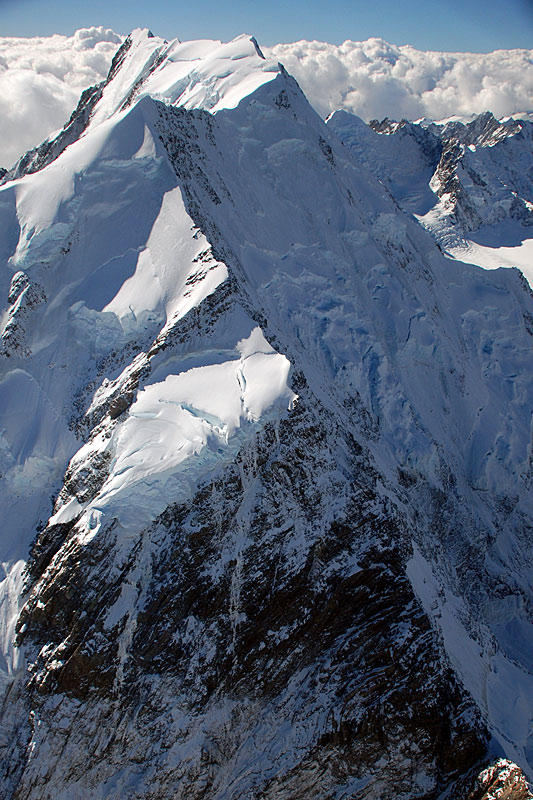 Mount Cook's South Ridge in the foreground is an arÍte. These ice-draped faces supply, via avalanches, Hooker Glacier on the left and Hochstetter Glacier (a tributary of Tasman Glacier) on the right (April 2008). | 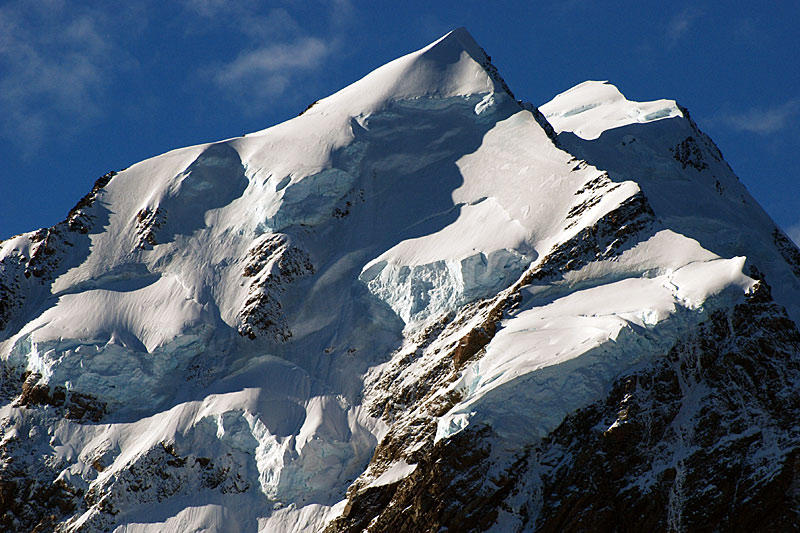 Ground telephoto of hanging glaciers on the west face of Aoraki/Mount Cook, viewed from the Hooker Valley. These glaciers are dynamic and prone to avalanching (April 2008). | 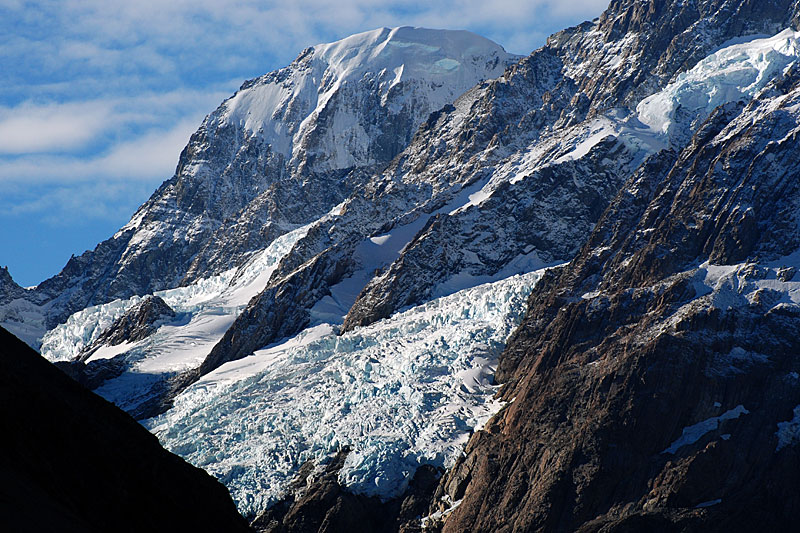 Ground telephoto of the lower slopes of Aoraki/Mount Cook: heavily crevassed Empress Glacier (left) and Noeline Glacier (lower centre), both of which flow into Hooker Glacier. Mount Tasman (3487m) is in the background (April 2008). |
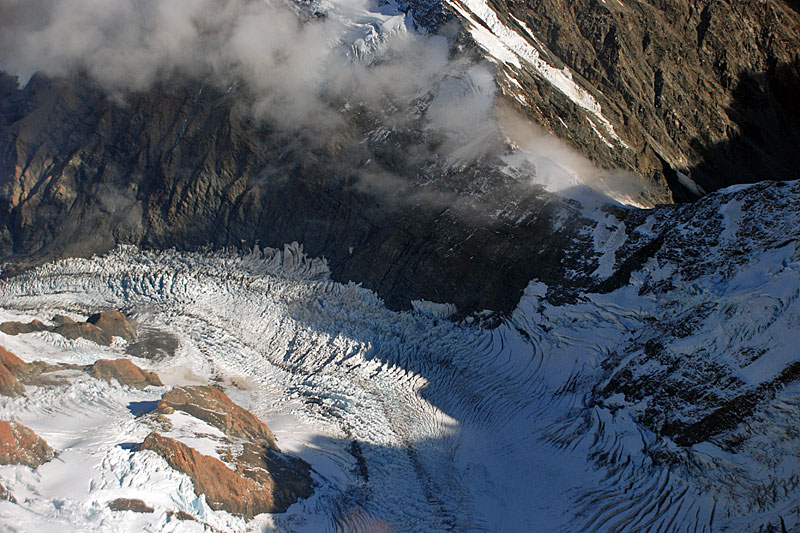 Aerial photograph of the middle reaches of Hooker Glacier, illustrating the convergence of several streams of ice on the precipitous surrounding slopes (April 2008). | 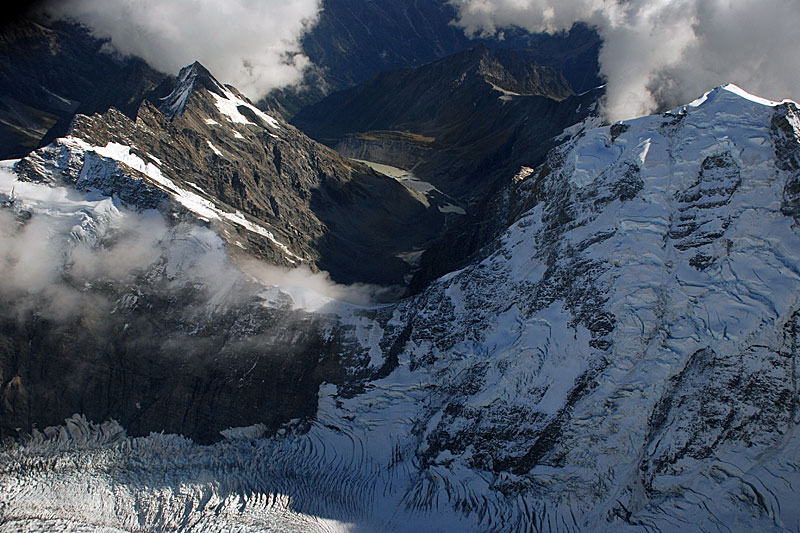 Face of La Perouse (3078 m) with icefalls descending to the tongue of Hooker Glacier. In the background, over the intervening ridge, is the dark rain forest of the West Coast, with a glimpse of Gulch Glacier snout (April 2008). | 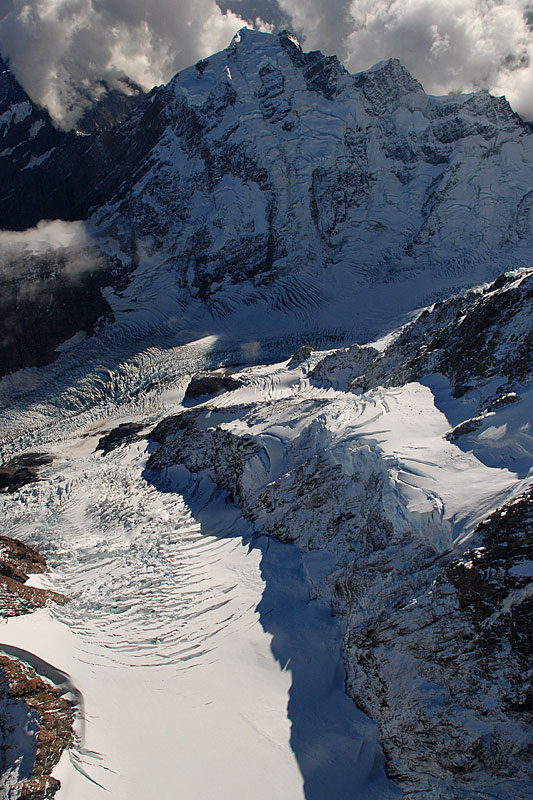 The upper reaches of the snow-covered main trunk of Hooker Glacier. The complex nature of accumulation on this glacier includes the in situ transformation of snow to firn and ice (as in the foreground) as well as avalanches, such as from La Perouse in the background (April 2008). | 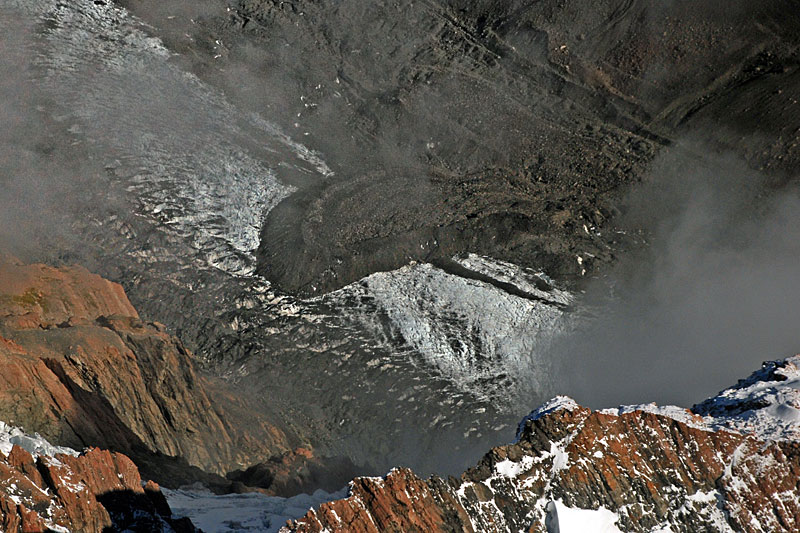 Like many glaciers in the Southern Alps, the Hooker Glacier tongue is mainly debris-covered. Note the lobate form of a large rock-fall, one of the many that are evident in the Aoraki/Mount Cook National Park (April 2008). |
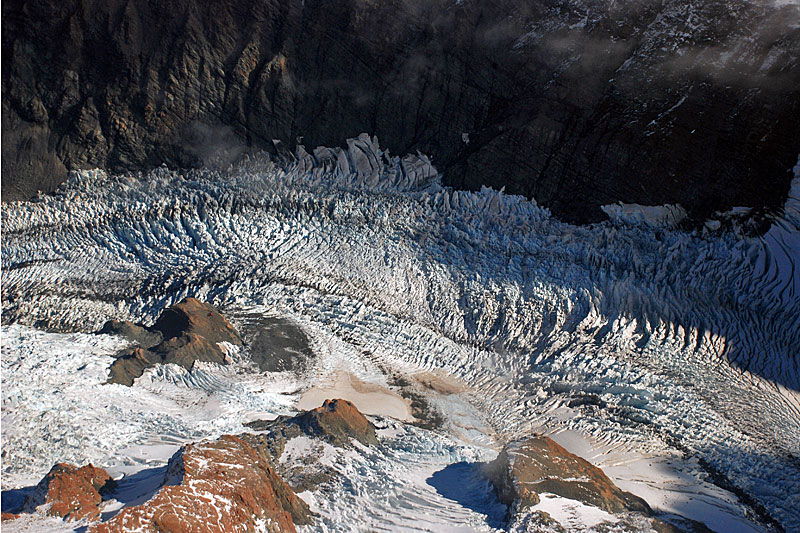 Zooming in on the middle tongue of Hooker Glacier, we can clearly see the development of transverse crevasses, which start as concave-upglacier forms (right), and then become convex downstream (left) as the glacier flows towards the left as a result of faster flow in the middle (April 2008). | 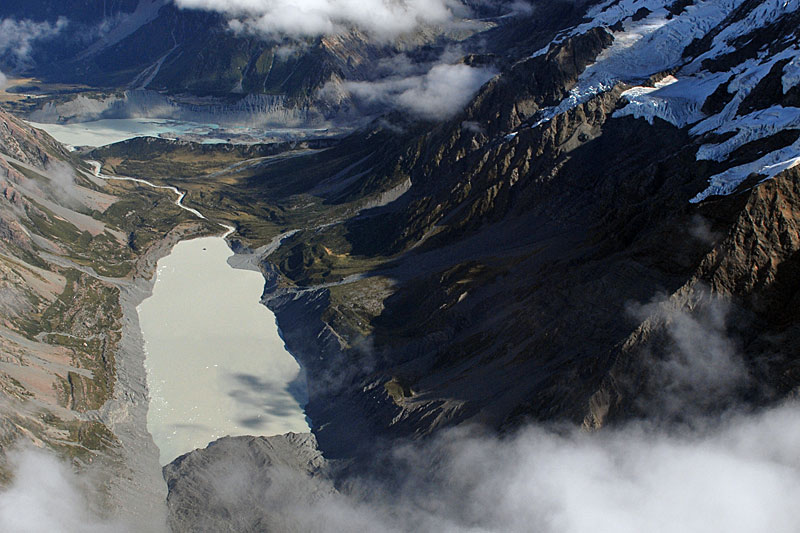 The snout of debris-mantled Hooker Glacier from the air as it terminates in its proglacial lake. The lake is dammed and flanked by Little Ice Age moraines. | 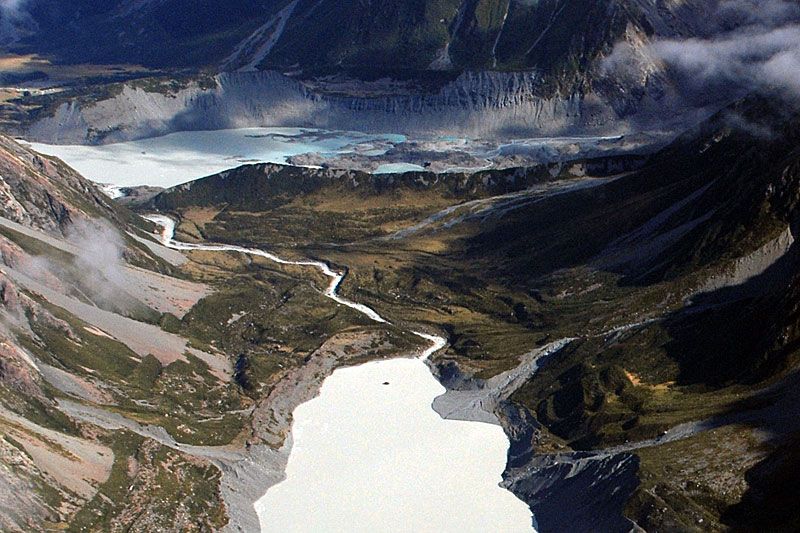 Enlarged section of the previous photo. In the background (top left) is the comparable proglacial lake and moraines of Mueller Glacier (April 2008). | 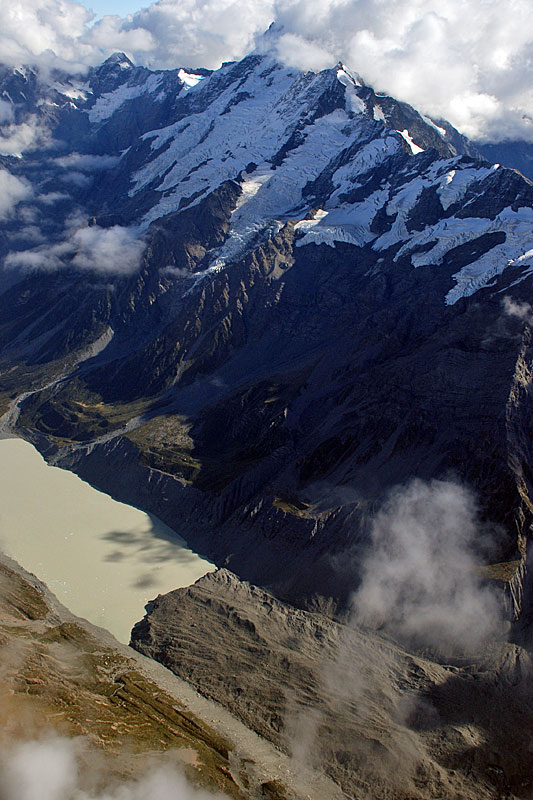 Another aerial view of the snout and the proglacial lake, but here showing the hanging glaciers on Mount Sefton (3151 m), most of which supply neighbouring Mueller Glacier (April 2008). |
| Photos Michael Hambrey |